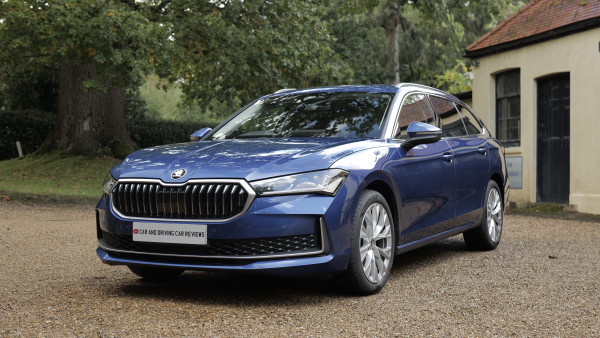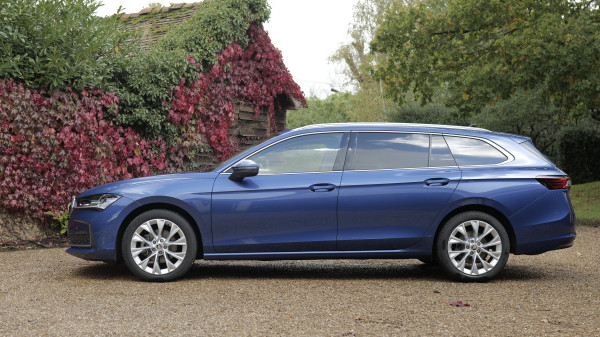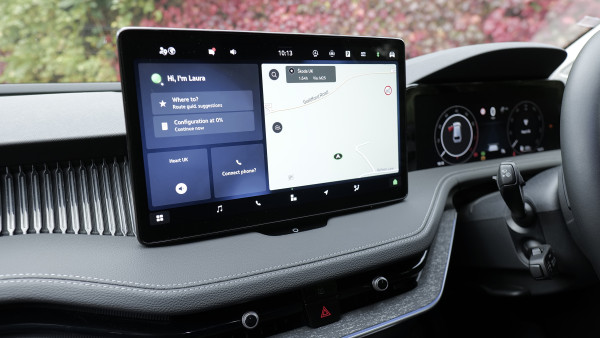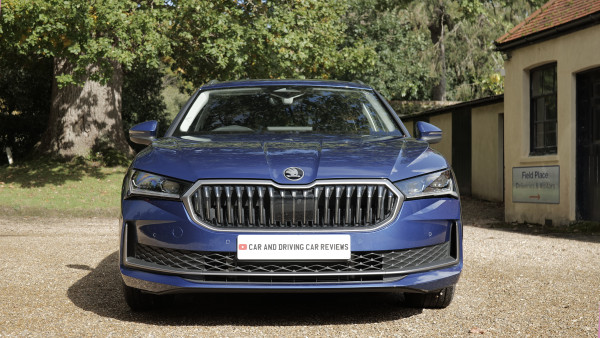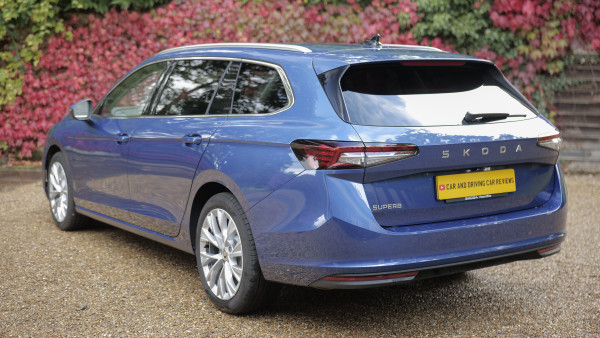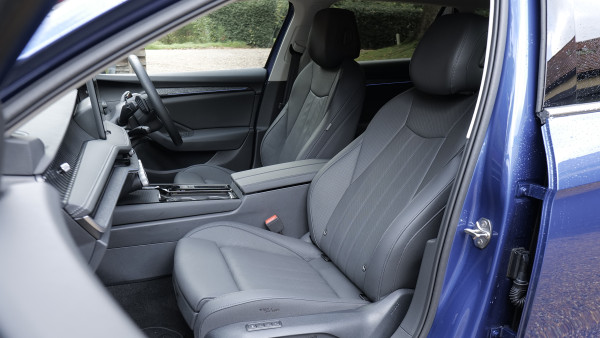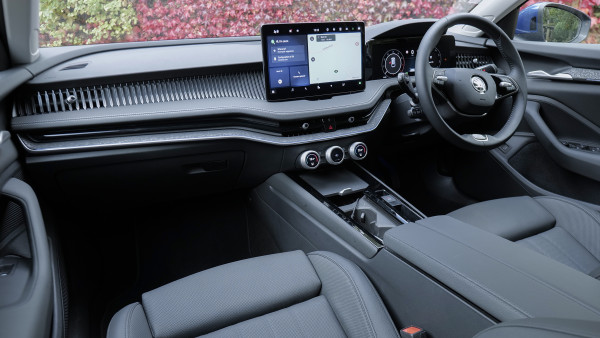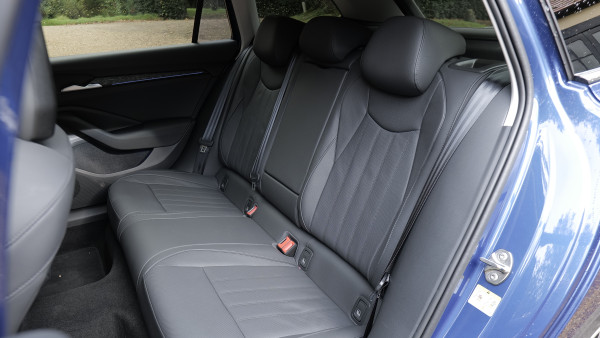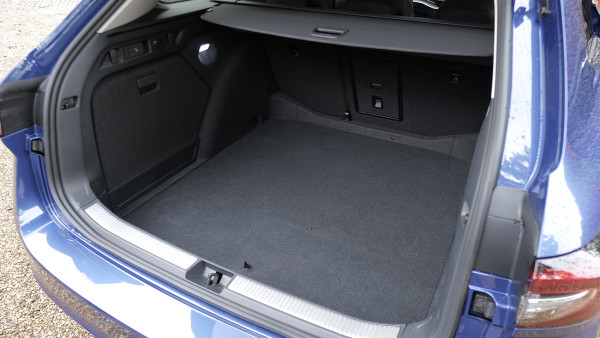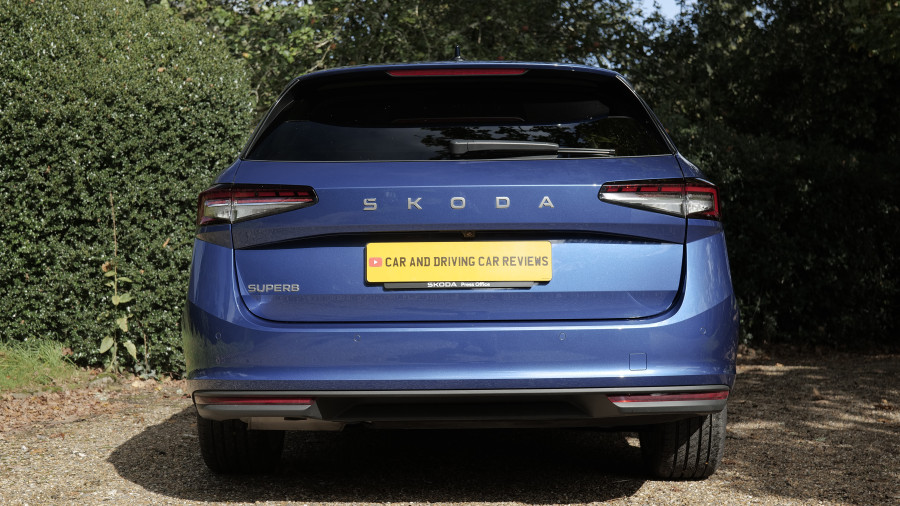Old school virtues get new packaging in the fourth generation version of Skoda's big Superb. Jonathan Crouch drives it.
Ten Second Review
This fourth generation Superb might well be the last all-new fossil fuelled car the Czech brand ever launches, so it's appropriate that as a product, it's very 'Skoda', sensible, spacious, good value and unpretentious in both hatch and estate form. There's something old (diesel engines) and something new (cutting-edge PHEV power). The right kind of customer might even think the end result to be, quite simply superb.
Background
It seems strange now to remember what an outlandishly unusual product the Superb was for Skoda's line-up when it first launched in B5-series form back in 2001. We'd never seen a Skoda this big and luxurious. The pundits said it wouldn't sell and VW Group higher-ups made plans to quietly drop this Passat-derived model at the end of its first generation. But sell it did - so well that Skoda got the green light to build a second generation B6-series version in 2008, then a third generation B8-series model in 2015.
Late 2023 saw the announcement of the fourth generation B9-series model we look at here, still Passat-based (it's now even built on the same production line) and sharing everything meaningful with the brand's second generation Kodiaq SUV. Nothing too radical's been changed here, but almost every part of this car has been thought about afresh. The result is difficult not to like.
Driving Experience
The mainstream powertrain options both develop 150PS and make 62mph in 9.2s en route to 139mph but are quite different. There's the mild hybrid 1.5 e-TEC petrol unit we tried, which has the VW Group's latest 48V mild hybrid tech; or, if you're more old school, the 2.0 TDI diesel, which in volume 150PS form has nearly 50% more pulling power (360Nm of it), hence a 2,200kg braked towing weight figure that's 300kgs more than the petrol model and will be of particular interest to many customers of the estate variant. This diesel can also be had in uprated 193PS form, in which guise it's mated to a 4WD system and for many, would in this guise make a more sensible alternative to a mid-sized SUV.
Talking of sensible alternatives, probably the biggest news on the engine front is the massively improved PHEV drivetrain. The previous generation Superb iV PHEV generally got a thumbs-down from British buyers (understandably so, with a relatively small 13kWh battery yielding just 35 miles of rarely-achieved range). So Skoda's had another go, this time equipping the iV Plug-in Hybrid with a sizeable 25.7kWh battery pack which is supposed to be able to offer driving range of up to 84 miles. The engine that cuts in at the end of all that is broadly the same 1.5-litre TSI four cylinder unit we're trying today but with the PHEV, this 150PS powerplant is mated to six rather than seven-speed auto transmission and works in concert with a 118PS electric motor, contributing to a total system output of 204PS.
Those rare folk who stretch right to 'Laurin & Klement' trim at the very top of the range get the option of the fastest available Superb engine, a 265PS 2.0 TSI petrol unit, which has to be had with 4WD and seems rather pointless given the sort of car this is.
Design and Build
At first glance, this fourth generation Superb looks merely a mild evolution in its five-door and estate forms. Closer inspection though, reveals some significant changes. For a start, the new MQB Evo platform allows it to become an even bigger car, around 40mm longer and 10mm taller than before (though it's also 15mm narrower). You'll notice changes at the front too, where slimmer LED headlamps (which deliver 40% more light) flank an octagonal grille which dips in the centre to allow a larger Skoda badge to sit at the end of the more sharply creased long bonnet. There's also a shallower windscreen rake and slimmer tail lamps. Wheel sizes vary from 17 to 19-inches.
Inside, the cabin redesign is much the same as the one featuring in the second generation Kodiaq SUV. Which means a large 12.9-inch centre screen and a 10-inch 'Virtual Cockpit' instrument display. Prominent at the base of the centre stack are three so-called 'Smart Dials' that control climate and can be programmed to work all kinds of other things, from audio volume to driving modes. All the cabin textiles are 100% recycled; and there are the usual Skoda 'Simply Clever' touches - like a cooling device built into the 'Phone Box' wireless charging pad, a USB port built into the rear view mirror and storage for high-viz vests in the doors. To provide more stowage space, the gear shifter has been moved to the steering column.
The Superb has always been known for vast amounts of rear seat legroom and this MK4 model is just as good in that regard - and offers 6mm more headroom. Rear passengers now get a fold-down centre armrest that can extend and slide forwards - which is useful when using the integrated tablet holder. Boot space is rated at 645-litres in the hatchback (20-litres more) and 690-litres in the estate (30-litres more), the latter figure growing to 1,920-litres with everything folded. So yes, it's all very practical.
Market and Model
Britain's the third biggest global market for the Superb and as before, over half of sales will be to fleets. At the time of launch and of our test in Autumn 2024, Skoda was asking from around £35,000 for this fourth generation Superb; that's for the base 1.5 TSI e-TEC 150PS version. It's around £1,500 more if you want the alternative 2.0 TDI 150PS diesel. That base price we just quoted is for the hatch body shape; most Superb customers will continue to want the estate body style, which requires a £1,300 premium. This station wagon by the way, is the body shape you have to have if you want a Plug-in Hybrid drivetrain in your Superb, which as we compiled this review, was priced from around £41,500 and uses a 6-speed auto. All other Superb models have the usual DSG 7-speed auto set-up.
With the previous generation Superb, there was a reasonable uptake on the 4WD versions from people fed up with the idea of an equivalent SUV, so further up the range, Skoda's continued that option here. Either with a more powerful version of the 2.0 TDI diesel (with 193PS); or with a top 2.0 TSI petrol model, which offers 265PS, only comes with 4WD and which hardly anyone will buy. To be able to choose either of these 4x4 variants, you have to ignore base 'SE Technology'-spec and choose either mid-range 'SE L'-spec (which is what we tried) or top plush 'Laurin & Klement' trim - the name references Skoda's founders, in case you're wondering.
Safety provision is a strongpoint. The improved autonomous emergency braking system can now detect cyclists. Plus there's a new 'Crossroad Assist' function that uses radar sensors in the bumper to monitor traffic at blind junctions and issue you a warning if you're about to pull out into the path of another vehicle. You can also now specify up to ten airbags in this car (including two side bags in the back).
Cost of Ownership
Like its Volkswagen Passat close cousin, the Superb suffers from the VW Group's rather baffling decision not to have developed a self-charging full-Hybrid engine. As we told you in our 'Driving' section, for customers of mainstream Superbs seeking some sort of electrification, there's only a choice of either the somewhat ineffectual 48V mild hybrid tech we tried; or the pricey option of the Superb iV Plug-in Hybrid. Which is why there's likely to continue to be a strong take-up for the powertrain that still probably suits this Skoda best, the 2.0 TDI 150PS diesel. This manages up to 58.0mpg on the combined cycle (usefully better than the 1.5 e-TEC 150PS model's 54.2mpg showing). But as usual, the diesel lets itself down a bit on CO2 emissions (a best of 128g/km, compared to the mild hybrid petrol's 119g/km best possible showing).
For real frugality though, you've to turn to the iV Plug-in Hybrid model which, as we told you in our 'Driving' section, now has a much larger 25.7kWh battery pack which is supposed to be able to offer driving range of up to 84 miles. As usual with PHEVs, this skews the combined cycle fuel figure well into fantasy land (here, it's quoted at up to 784.3mpg); in reality, you probably wouldn't do much better than would be the case with a frugally-driven diesel variant (and with the PHEV, you'd have to put up with a smaller fuel tank 45-litres as opposed to the usual 66-litres). But the important thing is that the HMRC believes the iV model's quoted CO2 figure - up to 8g/km - so a low Benefit-in-Kind taxation rating is guaranteed. The PHEV battery now supports DC charging at up to 50kW - which is much faster than the old-shape Superb iV, which was limited to just 3.6kW AC charging. That means a 10 to 80% battery top up will take around 25 minutes, while the new 11kW on-board charger allows full home battery replenishment to take as little as 2 hours. A more typical 7.4kW garage wallbox would need around four hours.
Summary
In a market increasingly dominated by SUVs, it's often tempting to wonder whether there's really still a place for a conventional 'D'-segment Passat-class model like this. Even if you were set on choosing a Skoda, why wouldn't you buy a Karoq or a Kodiaq for this sort of money? To continue to justify its place in the range, this fourth generation Superb had to offer a more credible answer to that question; and, by and large, it has.
It still won't really satisfy the very few people who come to this class in search of dynamic handling. But otherwise, there's much to like here. Not least the kind of exterior elegance that fits in as comfortably at a high class hotel as it does on a taxi rank. Above all, the Superb delivers space, and that's a quality you can never really have too much of in this corner of the market. Why? Because it's the one attribute where more mainstream marques can really land a telling blow on the premium badges. Something similarly priced like a BMW 3 Series or an Audi A4 is always going to feel more cramped inside than a Skoda Superb - and the advantage of the Superb Estate in that regard is particularly notable.
This then, remains a convincing flagship for Skoda's increasingly impressive model line-up, offering real luxury in an everyday accessible package. It's now safer, slicker and, particularly in plug-in form, more technically advanced too. Or, to put it another way, it is, to use Skoda's words, 'Simply Clever'.
